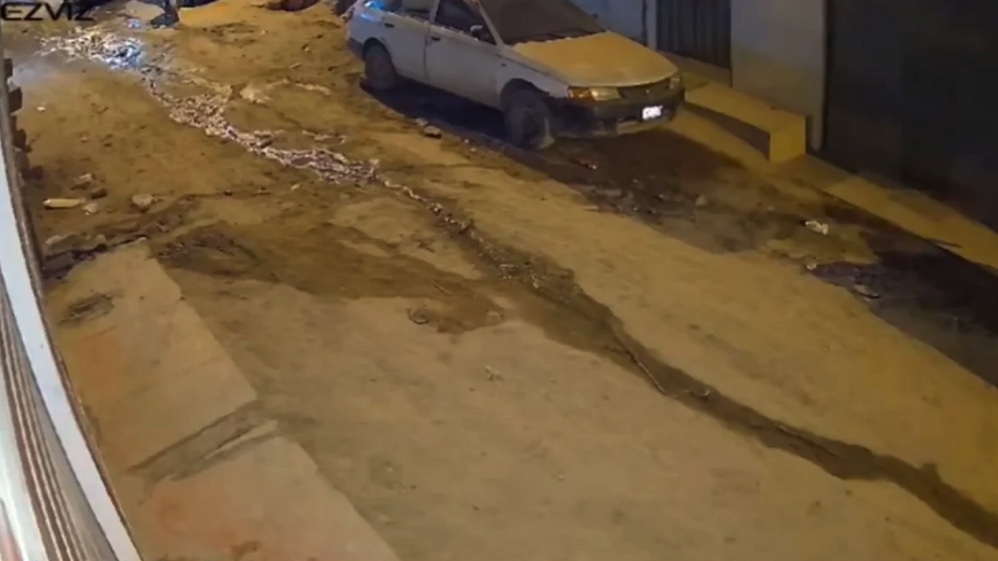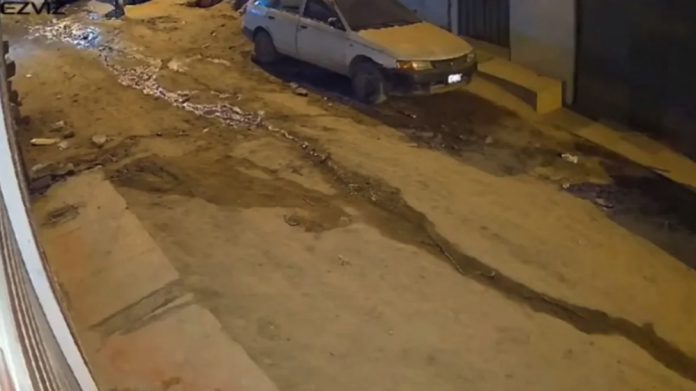สำนักงานสำรวจทางธรณีวิทยาแห่งสหรัฐอเมริกา (USGS) ระบุว่า มีผู้ได้รับบาดเจ็บอย่างน้อย 8 รายเมื่อเกิดแผ่นดินไหวขนาด 7.2 ริกเตอร์นอกชายฝั่งทางตอนใต้ของเปรูเมื่อคืนวันศุกร์ ที่ความลึก 28 กิโลเมตร แผ่นดินไหวครั้งนี้เกิดขึ้นห่างจากอาติกิปาไปทางตะวันตก 8 กิโลเมตร และห่างจากกรุงลิมาทางใต้ประมาณ 600 กิโลเมตร ชาวบ้านในอาติกิปารายงานทางโซเชียลมีเดียว่ารู้สึกถึงแผ่นดินไหวรุนแรงเป็นเวลานานทำให้มีการสั่นสะเทือนเข้ามาในตัวห้องพักของตน
ภาพจากกล้องวงจรปิดจากเมืองการาเวลีที่อยู่ใกล้เคียง แสดงให้เห็นถนนในย่านที่พักอาศัยแห่งหนึ่งสั่นสะเทือนอย่างรุนแรงระหว่างเกิดแผ่นดินไหว โดยมีผู้คนรีบออกจากบ้าน รู้สึกได้ถึงแผ่นดินไหวไกลถึงเมืองหลวงลิมา วิดีโอที่โพสต์บนโซเชียลมีเดียเผยให้เห็นโคมไฟที่แกว่งไปมาในบ้านเรือนที่นั่น เจ้าหน้าที่รายงานว่ามีผู้ได้รับบาดเจ็บแปดคนในเหตุการณ์นี้ กระทรวงสาธารณสุขระบุว่า มีผู้ป่วย 5 รายได้รับการรักษาพยาบาลในโรงพยาบาล 2 แห่งในภูมิภาคอิกา ขณะที่ 3 รายได้รับการรักษาอาการบาดเจ็บเล็กน้อยที่โรงพยาบาลแห่งหนึ่งในภูมิภาคอาเรกีปาที่อยู่ใกล้เคียง ทั้งสองแห่งอยู่ในเปรูทางตะวันตกเฉียงใต้ ตามการระบุของกระทรวงสาธารณสุข นายกรัฐมนตรีกุสตาโว อาเดรียนเซน แถลงว่าไม่มีรายงานผู้เสียชีวิตหลังแผ่นดินไหวครั้งนี้
“ขณะนี้เรากำลังวิเคราะห์รายงานเบื้องต้น ซึ่งระบุว่าไม่มีผู้เสียชีวิต และเรากำลังติดตามผลกระทบต่อโครงสร้างพื้นฐาน” อาเดรียนเซน บอกกับ RPP ทางวิทยุ ตามรายงานของ Andina สำนักข่าวเปรู ฝ่ายประธานาธิบดีเปรูระบุใน X ว่ารัฐบาลกำลังติดตามสถานการณ์และประเมินความเสียหายที่อาจเกิดขึ้น ศูนย์เตือนภัยสึนามิในมหาสมุทรแปซิฟิก (PTWC) ได้ออกคำเตือนเบื้องต้นเกี่ยวกับคลื่นสึนามิ “ที่เป็นไปได้” ที่มีความสูงถึง 1 ถึง 3 เมตร ตามแนวชายฝั่งบางแห่งในเปรู อย่างไรก็ตาม การแจ้งเตือนถูกยกเลิกในเวลาต่อมา โดย PTWC ระบุว่าไม่มีการเตือนภัยสึนามิ คำแนะนำ หรือภัยคุกคาม “ไม่มีภัยคุกคามสึนามิจากแผ่นดินไหวครั้งนี้อีกต่อไป” PTWC ยืนยัน เปรู พร้อมด้วยพื้นที่ส่วนใหญ่ของชายฝั่งแปซิฟิกอเมริกาใต้ ตั้งอยู่บนขอบเขตของแผ่นเปลือกโลก 2 แผ่น ได้แก่ แผ่นอเมริกาใต้ที่ครอบคลุมพื้นที่ส่วนใหญ่ของทวีป และแผ่นนัซกาที่ทอดตัวข้ามมหาสมุทรแปซิฟิกไปตามแนวชายฝั่งส่วนใหญ่
A powerful 7.2 magnitude earthquake strikes southern Peru, with no tsunami risk.

At least eight people were injured when a powerful 7.2 magnitude earthquake struck off the coast of southern Peru overnight on Friday, at a depth of 28 kilometres (17 miles), according to the United States Geological Survey (USGS). The quake occurred 8 kilometres (5 miles) west of Atiquipa, approximately 600 kilometres (372 miles) south of the capital, Lima. Residents of Atiquipa reported on social media feeling a strong, prolonged quake that shook their beds.
CCTV footage from the nearby town of Caraveli shows a residential street shaking violently during the tremor, with people rushing out of their houses. The quake was felt as far as the capital, Lima. Video posted on social media shows lamps swaying inside homes there. Authorities reported that eight people were injured in the incident. Five received medical attention in two hospitals in the Ica region, while three were treated for minor injuries at a hospital in the neighbouring Arequipa region, both in southwestern Peru, according to the Ministry of Health. Prime Minister Gustavo Adrianzen stated that no deaths have been reported following the quake.
“We are currently analysing preliminary reports, which indicate no fatalities, and we are monitoring the impact on infrastructure,” Adrianzen told radio RPP, according to Andina, the Peruvian news agency. The Peruvian Presidency stated on X that the government is monitoring the situation and assessing any potential damage. The Pacific Tsunami Warning Center (PTWC) initially issued an alert warning of “possible” tsunami waves reaching up to 1 to 3 metres along some coastal areas in Peru. However, the alert was later rescinded, with the PTWC stating there was no tsunami warning, advisory, or threat. “There is no longer a tsunami threat from this earthquake,” the PTWC confirmed. Peru, along with much of the South American Pacific Coast, lies on the boundary of two tectonic plates: the South American plate, encompassing most of the continent, and the Nazca plate, extending across the Pacific along the majority of the coast.
By CNN NEWS

















